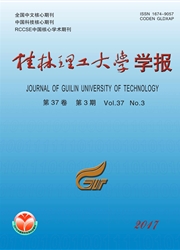

 中文摘要:
中文摘要:
采用遥感OLI数据和ASTER数据在西藏朱诺地区进行岩性识别。使用ASTER数据的SWIR波段进行波段组合和MNF变换提取岩性信息;用主成分分析法来处理OLI数据得到研究区的铁染和羟基信息;用高光谱技术从ASTER数据提取白云母信息。结合实地勘测结果,证实遥感数据对斑岩铜矿黄铁绢英岩化蚀变带的识别效果较好,将黄铁绢英岩化区域当作一种重要的找矿标志;采用ASTER TIR 谱段提取硅化蚀变信息,矿区硅化信息的解译并不具有普遍适用性。结果表明遥感是一种有用的岩性填图工具。
 英文摘要:
英文摘要:
Operational Land Imager (OLI)data and Advanced Spaceborne Thermal Emission and Reflection Radiometer (ASTER)data were used for lithologic identification in Zhunuo region of Tibet.Band combination method and minimum noise fraction method in the shortwave infrared bands of ASTER data were used to fetch the information about lithological distribution.Principal component analyses were applied to get the iron-stain alteration and hydroxyl alteration information by OLI data.Muscovite information was extracted from ASTER da-ta by hyperspectral technique.Combined with field research,remote sensing data is good at characterizing the beresitization area of porphyry deposits.Beresitization area is one of the important prospecting symbol.Thermal infrared (TIR)bands were used to detect surface silica alteration,but the result does not have universal appli-cability.It is conclueded that the remote sensing can be used as a useful tool for lithologic identification.
 同期刊论文项目
同期刊论文项目
 同项目期刊论文
同项目期刊论文
 期刊信息
期刊信息
